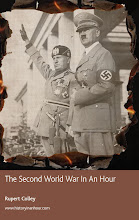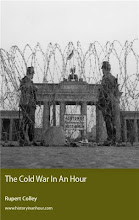A good day, I think, to start a historical blog - December 7th, the 68th anniversary of the attack on Pearl Harbor, the attack that brought the USA into World War Two.
It was 7 a.m., a Sunday morning, when the radar station on the island of Oahu first reported to its HQ a number of aircraft on its screen. The reply came back: "Don't worry about it." HQ were expecting a squadron of US planes to be passing by. But these were Japanese planes (bombers, dive-bombers and fighters), 185 of them, intent on ripping out the heart of the US fleet quietly moored on this Pacific island, 3,400 miles away from Japan.
Within a couple of hours it was over - three of the eight American battleships sunk, many other vessels and almost 300 planes. 2,403 Americans died (civilian and military) and over 1,000 wounded. The Japanese lost 29 planes and 100 pilots.
On the same day the Japanese attacked the Philippines and the British colony on Hong Kong.
A Day of Infamy
December 7 was, said US president, Franklin D. Roosevelt, the following day "a date that will live in infamy" and Congress accordingly voted 470 to 1 to go to war (the one being a pacifist vote from Montana).
The USA had entered World War Two and Churchill was delighted. "To have the United States at our side" (he later wrote), "was to me the greatest joy... Hitler's fate was sealed."
But Hitler too was pleased, the teetotaler toasting the occasion with a small glass of champagne. Three days later, on December 11, Hitler declared war on the USA. The conflict, that had started 27 months before, was now truly global.
Rupert Colley
Read all about World War Two in just one hour at historyinanhour.com
Monday, 7 December 2009
Subscribe to:
Post Comments (Atom)






No comments:
Post a Comment